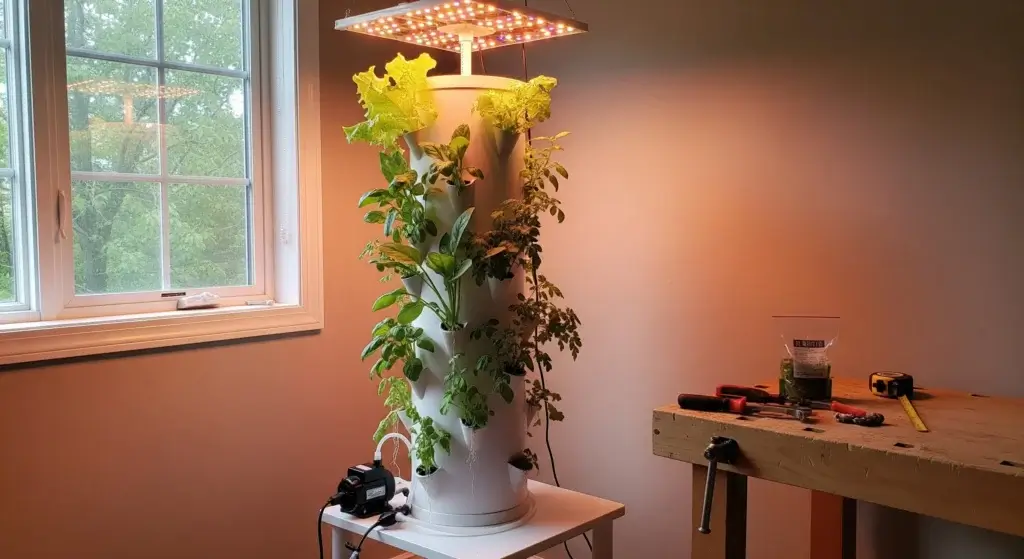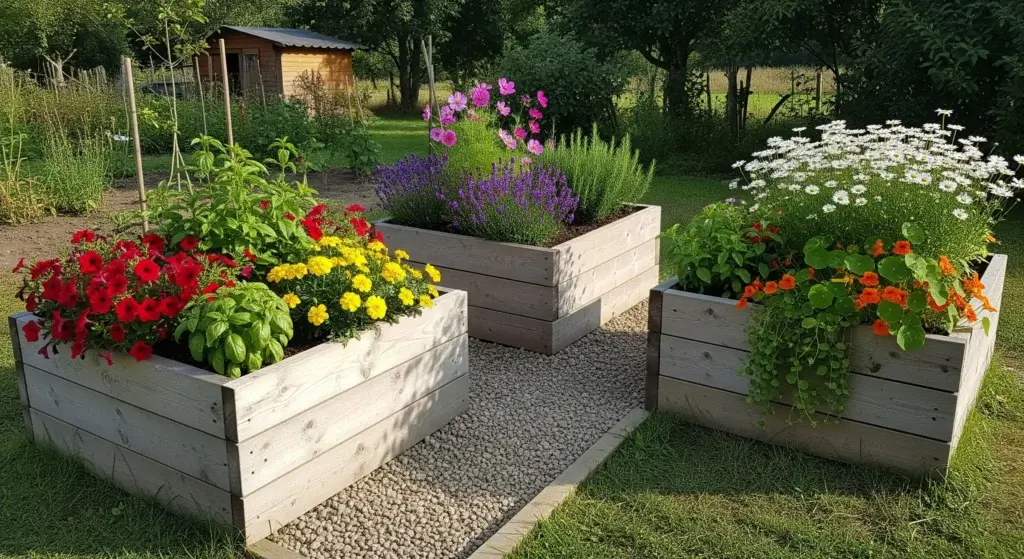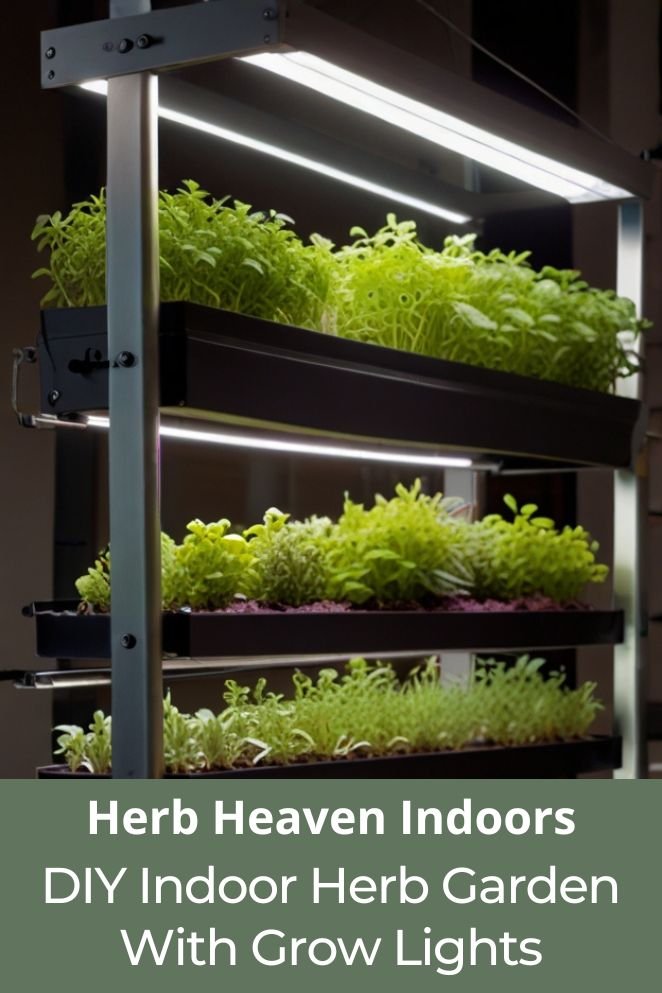
Growing your own herbs indoors can be a rewarding and delicious experience, especially with the right tools and techniques.
In this article, we’ll explore the basics of creating a DIY indoor herb garden using grow lights, from choosing the right herbs to setting up your grow lights and maintaining your garden.
Planning Your Indoor Herb Garden
Planning your indoor herb garden involves several key steps to ensure success and healthy growth.
Here’s a detailed guide to help you get started:
Choosing your herbs
When selecting herbs for your indoor garden, consider popular and easy-to-grow options like basil, mint, parsley, cilantro, and chives.
Each herb has its own sunlight needs and growth habits, so be mindful of these factors when making your choices.
For instance, basil and mint thrive in sunlight, while parsley and cilantro can tolerate lower light conditions.
Select herbs that align with your available light and personal preferences to set yourself up for success.
- Read also: No Yard Needed! DIY Herb Garden for Small Apartment
- Read also: Grow Your Own! A Guide to DIY Herb Garden For Beginners
Selecting the right containers
The type of container you choose for your indoor herb garden can significantly impact plant health.
Options range from traditional pots and planters to creative alternatives like recycled coffee cans or yogurt containers.
Regardless of the container type, ensure that it has adequate drainage holes to prevent waterlogged soil and root rot.
Proper drainage is essential for healthy herb growth, so prioritize containers that promote good airflow and moisture management.
Picking the perfect potting mix
A high-quality potting mix formulated specifically for herbs is crucial for optimal growth.
Look for mixes that contain perlite or vermiculite, which improve drainage and aeration for your herb’s roots.
Avoid dense or waterlogged mixes that can suffocate roots and lead to poor growth.
By selecting a well-draining potting mix tailored to herb cultivation, you provide your plants with the ideal growing environment for thriving indoors.
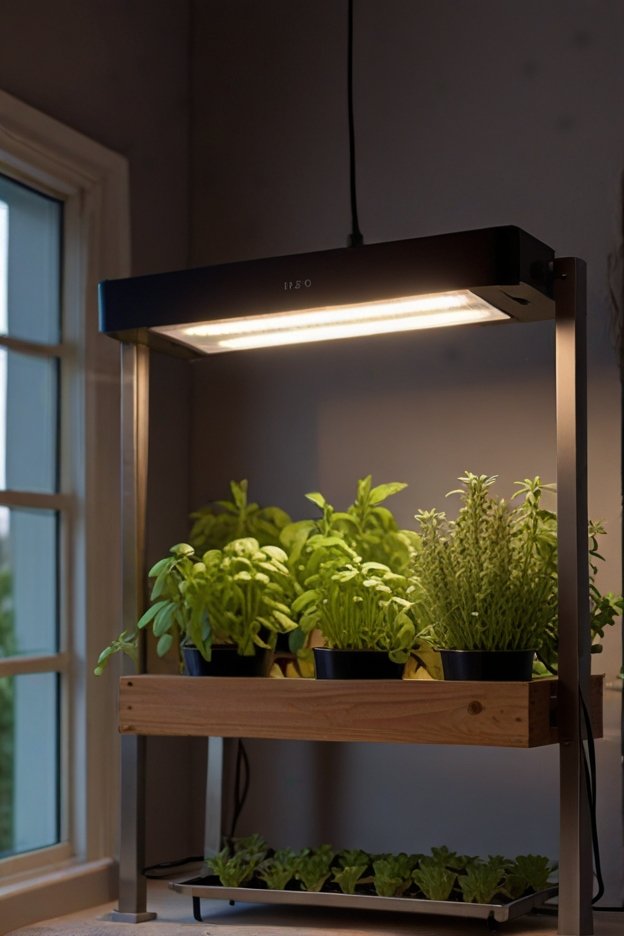
Setting Up Your Grow Lights
Setting up your grow lights for your indoor herb garden is essential for ensuring healthy growth and abundant harvests.
Here’s a detailed guide to help you get started:
Types of grow lights
When choosing grow lights for your indoor herb garden, you’ll encounter two main options: fluorescent lights and LED grow lights.
While fluorescent lights are budget-friendly, LED grow lights offer numerous benefits, including energy efficiency and a tailored spectrum for optimal plant growth.
LED grow lights are preferred by many indoor gardeners due to their intense, focused light that promotes robust plant development.
Positioning your grow lights
Proper positioning of your grow lights is crucial for successful herb growth.
Most herbs require between 12 to 16 hours of light per day to thrive.
To ensure optimal light exposure, position your grow lights approximately 6 to 12 inches above your herbs.
The exact distance may vary depending on the type of light and the size of your plants.
Adjust the height as needed to maintain the recommended light intensity and coverage for healthy herb growth.
Setting up a timer (optional)
Consistent light exposure is essential for maximizing herb growth and productivity.
Using a timer to automate your grow lights can help ensure that your herbs receive the required daily light duration.
Set your timer to provide the recommended 12 to 16 hours of light per day, depending on the specific needs of your herbs.
This eliminates the guesswork and ensures that your herbs receive consistent lighting, promoting steady growth and development.
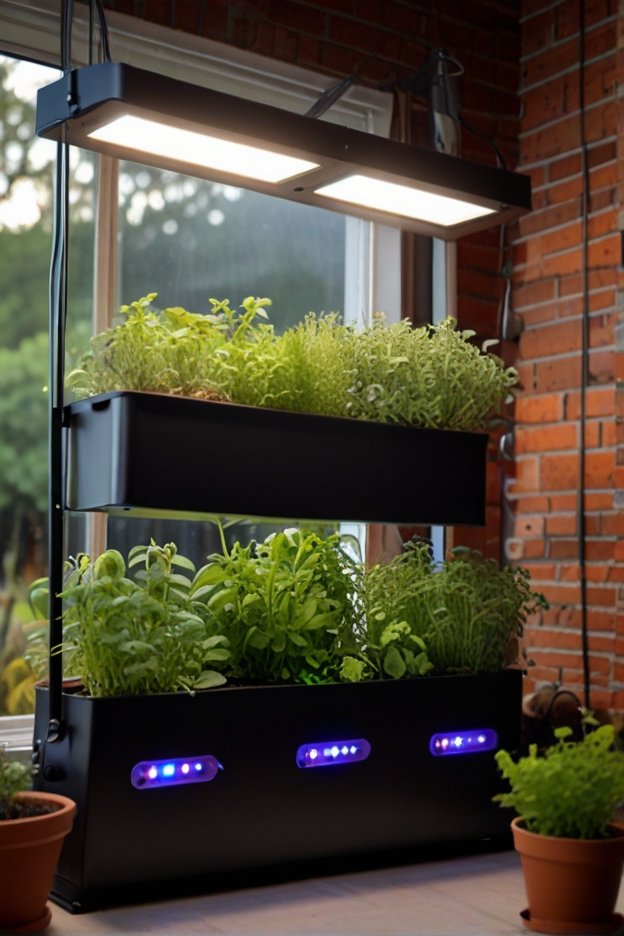
Planting, Watering, and Maintaining Your Herb Garden
Planting, watering, and maintaining your herb garden are crucial steps in ensuring healthy growth and abundant harvests.
Let’s dive into the details of each process:
Planting your herbs
Planting your herbs is a simple yet essential step in establishing your indoor garden.
Begin by selecting your desired containers and filling them with high-quality potting mix, leaving enough space between plants for proper growth and airflow.
Whether you’re starting from seeds or using seedlings, gently plant them at the appropriate depth in the soil and water thoroughly to settle the roots.
Be mindful of each herb’s specific spacing requirements to avoid overcrowding and competition for nutrients.
Watering wisely
Proper watering is crucial for the health and vitality of your herbs.
While herbs require regular watering to thrive, overwatering can lead to root rot and other issues.
To determine when to water, check the soil moisture by inserting your finger into the soil up to the first knuckle.
If the soil feels dry, it’s time to water.
However, if it feels moist, hold off on watering to prevent waterlogged conditions.
When watering, aim to moisten the soil evenly without soaking it, and avoid getting water on the leaves to prevent the development of fungal diseases.
Maintaining your herb garden
Regular maintenance is key to keeping your herb garden healthy and productive.
Monitor your herbs regularly for signs of pests, diseases, or nutrient deficiencies, and address any issues promptly.
Prune or harvest herbs as needed to encourage bushy growth and prolong the harvesting season.
Additionally, consider fertilizing your herbs periodically with a balanced, water-soluble fertilizer to provide essential nutrients for robust growth.
Lastly, keep an eye on environmental factors such as temperature, humidity, and light exposure to ensure optimal growing conditions for your herbs.
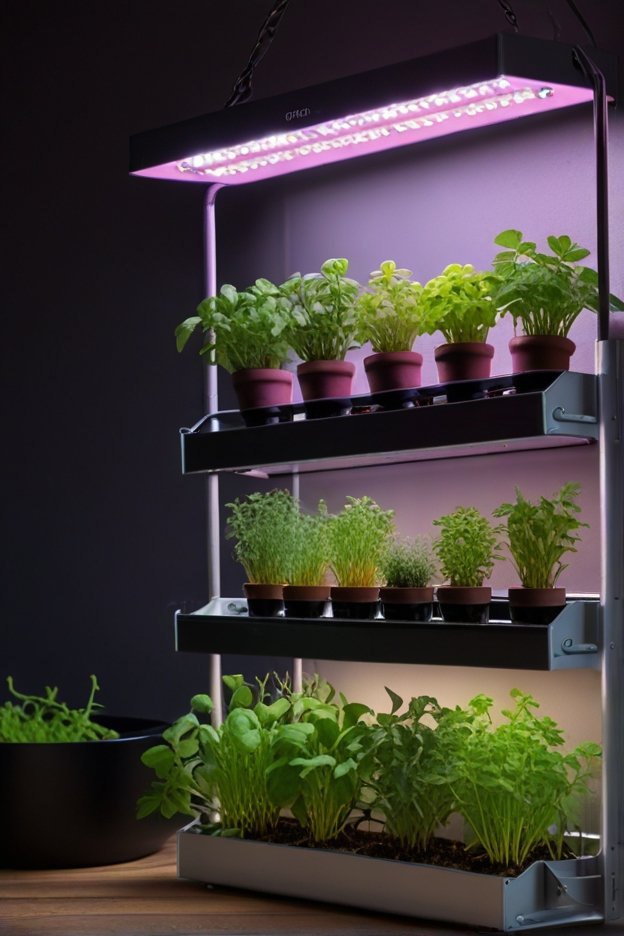
Essential Maintenance
Maintaining your indoor herb garden through essential tasks such as trimming, harvesting, and rotating plants is key to promoting healthy growth and maximizing yields.
Let’s delve into the details of each maintenance task:
Trimming
Regular trimming is vital for promoting bushy growth and preventing herbs from becoming leggy or straggly.
When trimming your herbs, focus on removing any dead or yellowing leaves, as well as any stems that have become overly long or unruly.
Use clean, sharp scissors or pruning shears to make clean cuts, and avoid cutting into the main stem of the plant.
Harvesting
Harvesting your herbs regularly not only provides you with fresh, flavorful ingredients for your culinary creations but also encourages continuous growth and prevents plants from flowering prematurely.
When harvesting, opt for young, tender leaves and stems, as these are typically the most flavorful.
Use scissors or pinch off leaves with your fingers, taking care not to remove more than one-third of the plant’s foliage at a time.
Rotating plants
Rotating your herb plants every few days is essential for promoting even growth and preventing them from leaning towards the light source.
Indoor plants have a natural tendency to grow towards light, which can result in uneven growth and leggy stems.
To counteract this, periodically rotate your herb containers to ensure that all sides of the plants receive equal exposure to light.
- Read also: Trash to Treasure: DIY Herb Garden From Recycled Materials
- Read also: The Beginner’s Guide: Build DIY Hydroponic Vegetable Garden
Conclusion
Creating a DIY indoor herb garden with grow lights is a fun and rewarding project that can provide fresh herbs all year round.
By choosing the right herbs, selecting the right containers, and setting up your grow lights correctly, you can enjoy a bountiful harvest of fresh herbs.
Remember to water wisely and maintain your garden regularly to ensure optimal growth and maximum yields.


